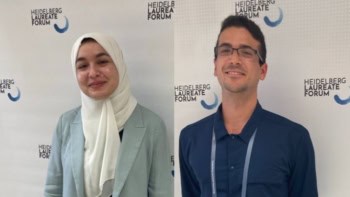
Perovskite solar cells (PSCs) made from organic-inorganic halides are a promising photovoltaic technology thanks to their remarkable power conversion efficiency (PCE). Further improvements in these devices is limited, however, by the problem of photoinduced charge carriers (electrons and holes) recombining in the photoactive perovskite layer. A team of researchers at North China Electric Power University and the Chinese Academy of Sciences, both in Beijing, has now made the first ever p-n perovskite homojunction whose built-in electric field reduces the losses from this recombination by orienting the transport of photo-charge-carriers in a particular direction. The new homojunction structure is very different to existing perovskite solar cell architectures and could expand applications of these materials beyond solar cells.
Organic-inorganic halide perovskites have an ABX3 structure, where A is caesium and methylammonium (MA) or formamidinium (FA), B is lead or tin and X is chlorine, bromine or iodine. These materials can absorb light over a broad range of solar spectrum wavelengths thanks to their tuneable bandgaps, and charge carriers can diffuse through them quickly and over long lengths. These and other excellent properties have allowed the solar cell efficiencies of perovskites to skyrocket from an initial 3.8% (in 2009) to over 23% today. This makes their performance comparable to that of established technologies such as silicon, GaAs and CdTe.
Improving device architecture
Researchers recently found that reducing carrier recombination losses both in the perovskite layer and at the interfaces between the different layers in these heteromaterials could allow for PCEs that approach theoretical values. Although there are many ways to do this, one of the most promising is to improve the device architecture in heterojunction PSCs containing a perovskite layer in contact with electron/hole materials. In these structures, the perovskite also forms a homojunction thanks to its unique self-doping property.
“This homojunction should minimize the presence of impurities that act as carrier recombination centres,” explains team leader Meicheng Li. “What is more, a natural built-in electric field that forms in this homojunction could enhance the oriented transport of photo-induced electron/holes, thus decreasing their recombination rates even further.”
The researchers say they have now fabricated such a perovskite p-n homojunction structure using a technique called deposition processing. They then integrated this junction into planar PSCs.
n- or p-type self-doping
“We could make the perovskite either n- or p-type self-doped by controlling defect populations in the material,” explains Li. “For example, MAPbI3 films we made with Pb2+-rich/MA+-deficient/I−-deficient precursors are n-doped and those with MA+-rich/Pb2+-deficient precursors are p-doped.”
The growth conditions and the ratio of the precursors can thus be controlled precisely to realize the perovskite homojunction, he adds.

Perovskite devices break new records
Li and colleagues identified the built-in electric field in the homojunction using a cross-sectional Kelvin probe microscopy technique. They found that this field indeed orients the direction in which the photo-induced carriers are transported and thus reduces losses from carrier recombination.
New architecture for perovskite solar cells
The researchers measured a PCE of 20.80% in planar PSCs made with a MAPbI3 p-n homojunction This increased to 21.38% in a FA0.15MA0.85PbI3 p-n one, a value that exceeds the previously reported higest efficiency for planar PSCs.
“Our structure is a new architecture for perovskite solar cells,” Li tells Physics World. “This homojunction could be exploited in other applications too, such as light emission devices, sensors and optoelectronics components.”
The research is detailed in Nature Energy.



